By Todd Gardner
The term “bottleneck” gets thrown around a lot in aquaculture. When we use it, we are typically referring to the specific problem (or at least, the most important problem) that prevents us from closing the life cycle of a species or from getting a species into commercial production. Not surprisingly, the term is most often applied to some aspect of larval rearing – finding an appropriate first food, meeting their nutritional requirements, maintaining a physical, chemical, and microbial environment that is not somehow lethal to delicate larvae. Admittedly these are challenging problems. Meeting the nutritional demands of a larval fish usually involves culturing multiple species of phytoplankton and zooplankton. Maintaining a suitable larval environment often means using a non-standard tank design and reinventing methods for water exchange, flow and filtration. Most larvae seem to be much more sensitive to the microbial community than older fish and they easily succumb to the inevitable bacterial blooms associated with an aquarium, leaving us with the perpetual question: should we sterilize, inoculate, or medicate? (The answer probably depends on the species you’re trying to culture, but in my experience sterilization, has yielded the best results to date).
Although the roles of broodstock condition and spawn quality are frequently discussed in accounts of aquaculture successes and failures, it seems to me that this is an area that does not receive sufficient attention in research and literature. One reason for this may be the common perception that the major bottleneck for most species is associated with larval rearing, so these problems are more deserving of our efforts; however it may also be related to simple statistics and the need to produce meaningful results. Whether you are working at a university lab, a commercial aquaculture facility, or your home fish room, it is very likely that there are far fewer fishes in your broodstock system than in your rearing and grow-out tanks. Therefore broodstock is usually less conducive to research because it does not contain numbers that are typically considered robust sample sizes. A rearing tank on the other hand, may contain thousands of individuals, making it a perfect starting point for producing statistically significant results.
I can’t argue with statistics, so all I can do is encourage researchers to design experiments and assemble sufficiently large broodstock populations to address some of the brood-related factors that can affect the ability of larvae to survive and thrive – what is sometimes referred to, collectively as the brood effect. As for my assertion that the brood effect is underappreciated as a limiting factor in aquaculture, I have seen abundant evidence of this within the aquarium hobby. I often hear hobbyists make statements like: “His tank was so healthy, fish actuallyspawned in there.” As if spawning was unthinkable unless conditions were perfect. I know I’ve seen fish spawn in some pretty grim conditions.

A plankton net can be used for collecting pelagic eggs from a large reef tank if you have enough flow.
One of my most frustrating experiences with this attitude came while I was working at C-quest, as a commercial aquaculturist. I had refined protocols for handling, incubating, and hatching eggs and rearing larvae of Pseudochromis spp. Before long, it was not uncommon for us to raise 1000 or more juveniles from a single spawn. After about a year of great production, rates of hatching and early survivorship dropped sharply. Suddenly we were not raising any dottybacks. The manager, who was new at the time, demanded that I start making changes to my protocols for egg handling, hatching, and feeding. I agreed, but I also pointed out that nothing had changed in my well-proven procedure and that perhaps we should also be looking to broodstock management for an explanation. She quickly dismissed my suggestion saying: “There can’t be anything wrong in broodstock. Those fish are spawning.” After going home that night and working on my résumé, I came in and started looking into broodstock issues myself. It turned out that several key ingredients for our broodstock gel diet had run out and the person responsible for mixing up new batches of the food each week had not informed anyone. So for at least a month, the food was made without a HUFA supplement, squid, or kelp meal. Within a few weeks of restoring the full complement of ingredients, early survivorship increased and the dottyback system was in business again.
With 1600 broodstock pairs in place, C-quest was actually a great place for studying the brood effect… Well, except for the fact that the pressures of producing large numbers of fish didn’t allow time for research. Nevertheless, with that many pairs and even the most basic record keeping, it was easy to spot trends. At one point we noticed that the hatch rate and early survivorship in almost all of our anemonefishes were slowly declining. We ran the gamut of potential solutions: We stepped up cleaning on the tanks, increased rates of water changes, made fresh batches of food, but nothing seemed to be helping. In the end, owner Bill Addison turned to his secret weapon – a sort of league of superhero aquaculturists. He put in calls to his friends and mentors, Martin Moe, Forrest Young, and Frank Hoff. The consensus seemed to be that there was some kind of pathogen or internal parasite that, without causing the brood fish to show any outward signs of sickness, was draining enough energy from them to interfere with the production of healthy gametes. Of course, we didn’t have the means to properly diagnose the problem at this low-tech facility, so we did the irresponsible thing of which so many aquaculturists are guilty. We took what we like to call an educated guess, but what was probably more appropriately called a shot in the dark. We mixed up a batch of gel diet with a measured dosage (don’t ask me the dose) of Dimetronidazole, an anti-parasitic drug that is also effective against some bacteria. In that case, we got lucky and following a two-week treatment, the hatch rate and early survivorship in our anemonefishes rebounded completely.
My next encounter with the brood effect came while I was collecting data for my Master’s research at Hofstra University a few years later. I was looking at the effects of the early feeding regime in the aquaculture of the lined seahorse,Hippocampus erectus. Specifically, I was varying the number of days they were fed copepods (0-5 days) before switching over to Artemia. The experiment consisted of five replicates with each replicate taken from a different brood and each brood divided into five treatment groups. Although each of the broods showed the same general trend (the greater the number of days on copepods, the greater the survivorship), there was a more surprising result: The difference in survivorship between different broods was greater than the difference between treatment groups. In other words, the brood effect was more important than the treatment effect. As my experiment was not designed to examine the brood effect, the data were of little value to my thesis, however I still feel this outcome is worthy of some discussion. I will never know whether the brood effect observed in this experiment was the result of genetic factors, differences in the timing of spawning and endocrine state of the broodstock, the amount of time each pair spent in captivity before their respective broods were taken for the experiment, or some variable I have not yet considered. What I can say however, is that some combination of factors acting on the broodstock was a more important determinant of juvenile survivorship during their first month of life than their early feeding regime. Notice in the graph below, that in brood 1, treatment 1 (0 days of copepod feeding, the treatment with the lowest survivorship for all broods), the survivorship was higher than in any treatment for any of the other broods.
Another point worth mentioning, based on more than 20 years of raising seahorses is that whenever I have attempted to rear a brood obtained from a male seahorse that was collected, already pregnant from the wild, I have achieved higher survivorship than from broods spawned in captivity. Several of my colleagues in the world of aquaculture have reported similar results with wild versus captive-spawned eggs of other fish species.
During my 11 years working at the Long Island Aquarium, I had the opportunity to work with a number of challenging marine fish species, including tropical basses, basslets, and angelfishes. During the time that I was working toward what I believe to be the only successful rearing of basses in the genus Liopropoma, I made some interesting observations about variations in the egg quality of these valuable reef fishes. The broodstock system consisted of six 29-gallon tanks with standard biological filtration. They were fed a diet consisting of approximately equal portions of dry pelleted food, frozen marine mysid shrimps, and Mazuri gel diet. After battling with poor viability of eggs for a couple of years, some patterns began to emerge. The first factor that came to light was that when the pH of the water dipped below 8, I saw almost no development of eggs. My friend and aquaculture colleague, Matt Palmtag, asked about pH one day while I was complaining to him about egg quality and he pointed out what should have been obvious to me as a biology teacher: Sperm cells are usually adapted to a narrow range of pH, which is why, in most animals, they travel within the protection of a pH-buffered solution – semen. Taking action to keep my pH above 8 helped, but there were still long periods of time where no eggs hatched. It took three years of record keeping before I began to understand what was going on. Although these basses produced eggs throughout the year, they have a distinct spawning season. Between July and December, I would get some hatching, with the peak in August and September. Each winter, spawn size and hatch rate would taper off until around January. From January until June I would collect eggs sporadically, but they would almost never hatch.
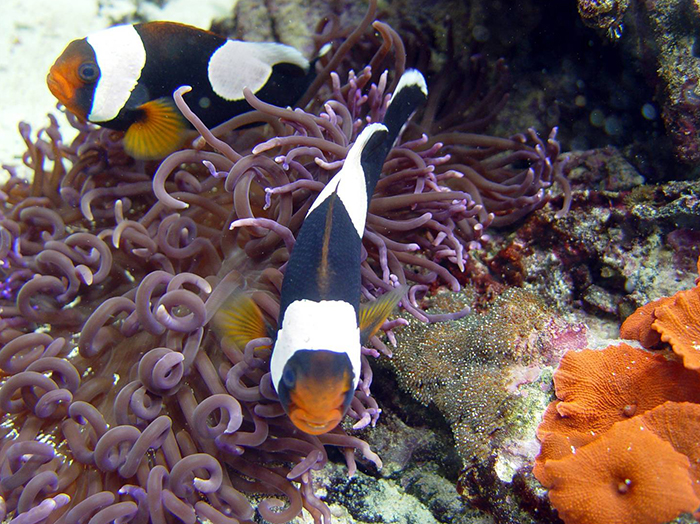
Amphiprion polymnus pair guarding their spawn in the Anemone Tank at the Long Island Aquarium. Not surprisingly, spawns taken from reef tanks are often healthier than those produced in broodstock systems. The trade-off is they can be very difficult to remove.
Working with the eggs of Liopropoma, as well as a variety of other species collected from display tanks has given me some experience trying to gauge the viability of pelagic eggs. A common method used to determine whether eggs are fertilized or otherwise destined to hatch, is buoyancy. In many species, unfertilized or dead eggs will sink whereas viable eggs will float. I found that this criterion held up well with eggs of Liopropoma, but not for others, such as Monodactylus spp. Similarly, in food fish culture, egg buoyancy correlates well with viability in the seabass,Dicentrarchus labrax and mahi-mahi, Coryphaena hippurus, but not in the Atlantic halibut, Hippoglossus hippoglossus. Other indicators used in assessing the quality of fish eggs include egg morphology, transparency and cell symmetry at certain stages in development.
Obviously, for aquaculturists, what’s far more important than assessment tools for egg quality, are determinants of egg quality. As discussed above, diet, pathogen burden, and endocrine state all play important roles. In the wild, fishes are eating exactly what they need to eat and their spawning cycles are controlled by complex hormonal interactions that are synchronized by exogenous cues like photoperiod, temperature, and the lunar cycle. For these reasons, it is not surprising that wild collected eggs show better survivability than those spawned in captivity. In an aquarium, artificial light and temperature regimes coupled with fishes’ internal timing mechanisms send mixed messages to the elements of the endocrine system responsible for the coordinated assembly of a healthy egg (oogenesis), a complex process that can take years. Efforts to induce spawning by injecting hormones such as human chorionic gonadotropin (HCG), or manipulating daylight cycles have been successful to a point, but these tactics may result in premature ovulation. Resulting eggs are often deficient in critical components and suffer high mortalities.
You may have noticed that in discussions of spawn quality, females and egg cells are often given much more attention than males and sperm. There’s a good reason for this. Sperm cells are little more than a packet of DNA with a flagellum (in most animals). As such, they are typically much smaller than egg cells and don’t show as much variability in size between species. A human egg cell is 30-50 times larger than a sperm cell. In most fishes however, the disparity is much greater. An average-sized pelagic fish egg, measuring 1mm in diameter is 23,000 times larger, by volume than a human egg. Besides DNA and a membrane, egg cells contain the energy, in the form of yolk, needed for the early stages of development, but that’s not all. They also contain vitamins, hormones and messenger RNAs carrying instructions for the assembly of proteins needed for development. All of these components must be contributed by the mother before ovulation. So, although genetics play a role (not addressed here), the importance of the sperm cell in spawn quality ends there, whereas most of the variables surrounding the viability of an embryo are tied to the egg cell. One tactic often used by aquaculturists to improve egg quality, is to include fish eggs (roe) in the broodstock diet. One way to gain access to fresh eggs is to develop a good relationship with your local seafood market and ask if they would set roe aside while cleaning fish. Keep in mind that there may be significant differences in egg composition between freshwater and marine species and also between warm and cold-water species.
If you want to ensure the highest quality fish eggs from your broodstock, here’s the take-home message:
1)Try to duplicate as closely as possible, the natural diet of the species with which you are working.
2) Take every precaution to reduce disease, including a strict quarantine protocol for your broodstock fish and any fishes to which they will be exposed.
3) If you decide to manipulate light cycles, try to synchronize photoperiod and moonlight exposure with natural cycles.
4) Reduce stress. Obviously stress can cause fish to become more susceptible to disease and, depending on the timing, may cause fish to not spawn at all, but there is also abundant evidence that the release of stress-related hormones can disrupt the formation of healthy eggs leading to poor viability.
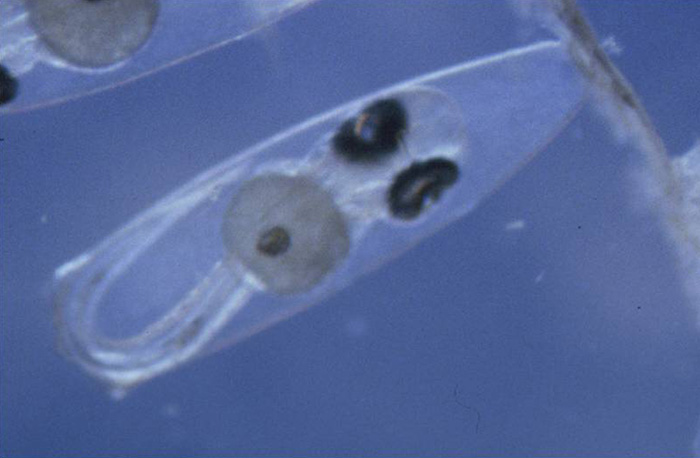
A piece of ½ – inch PVC makes a perfect spawning surface for this pair of green-banded gobies Tigrigobius multifasciatum.
One final thought: If you find yourself working with a difficult new species and you having little or no success with their larvae, don’t overlook the brood effect. I consider anemonefishes among the easiest of marine fishes to raise, but I have had numerous pairs over the years that, for any number of reasons, produced larvae that would not survive beyond the first few days. Maybe your impossible species is just giving you bad eggs.


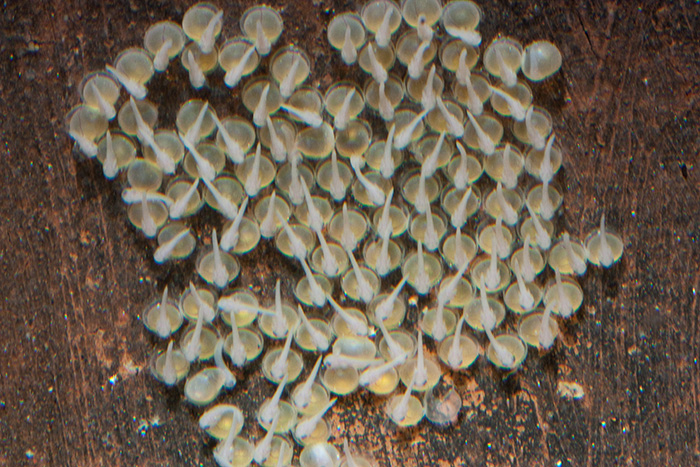
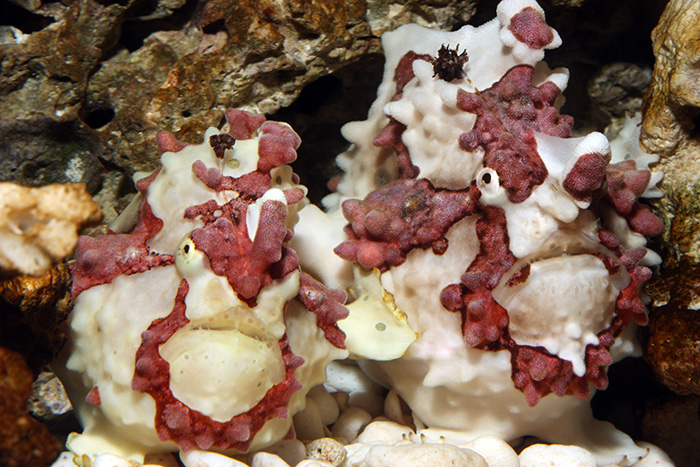
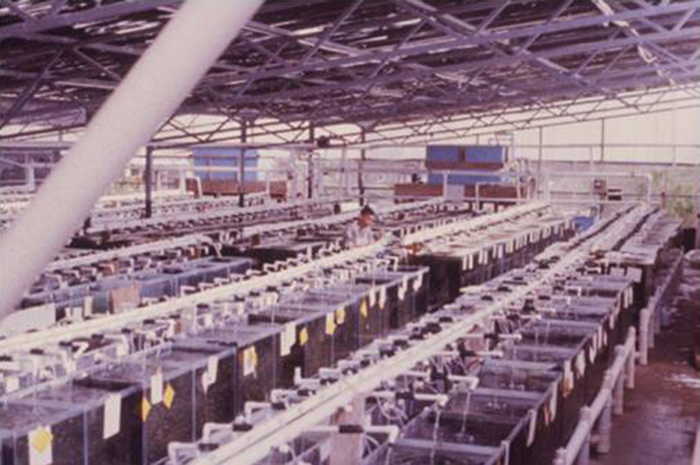
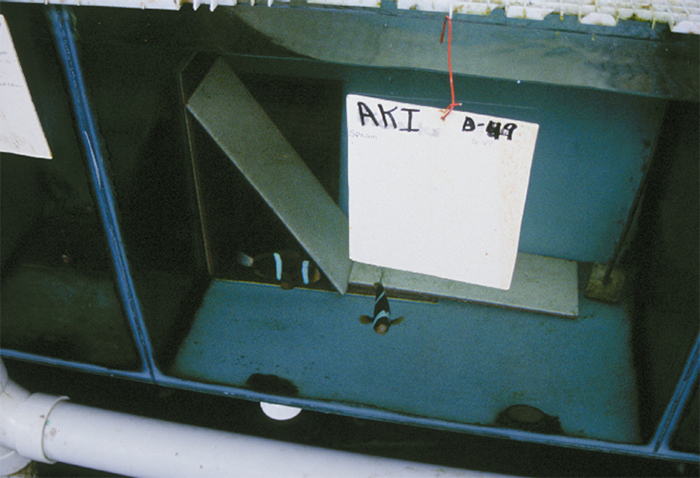



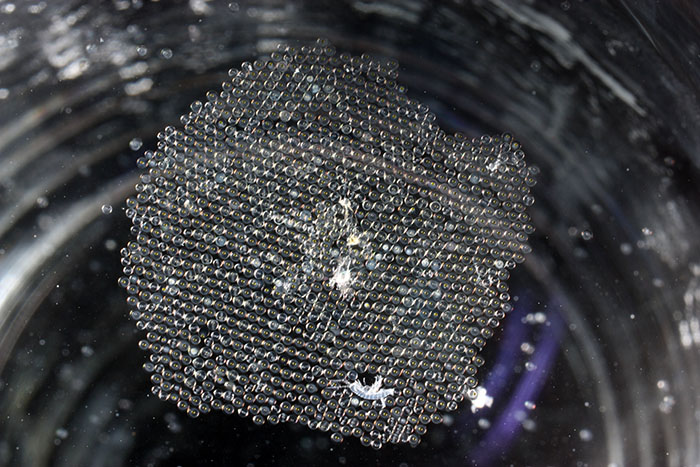

0 Comments